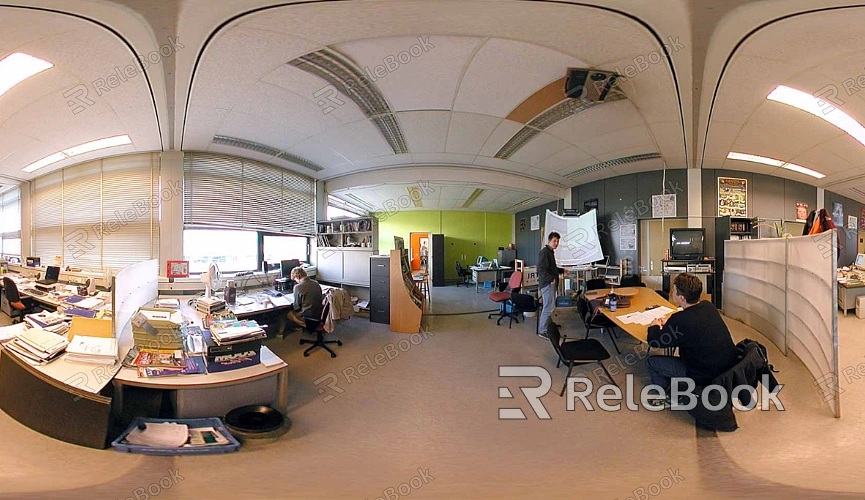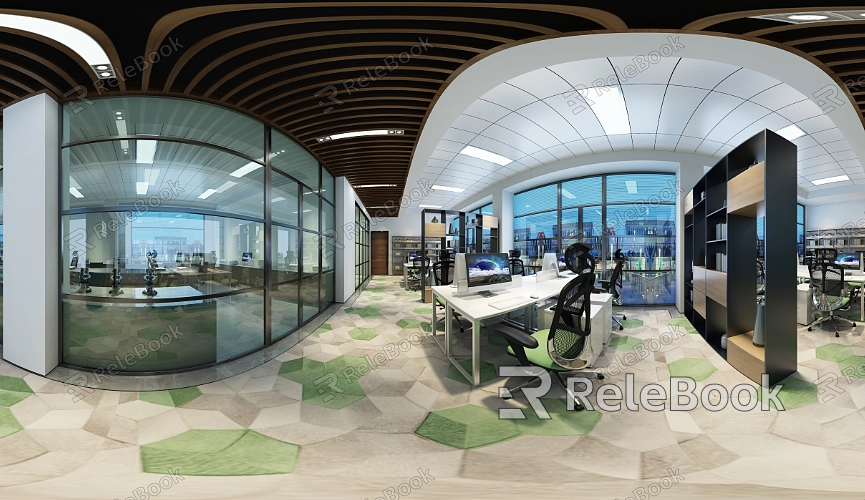How Do HDR Textures Affect Lighting and Shadows in Unity
Unity, as a widely used real-time rendering engine, often deals with HDR (High Dynamic Range) textures due to their ability to provide a broader range of brightness compared to traditional textures. This allows for more natural and refined highlights and shadows in a scene. However, improper usage can lead to visual issues that undermine the realism of lighting. Therefore, understanding how to properly apply HDR textures in Unity is essential for every 3D designer.

1. Brightness Range of HDR Textures and Lighting Performance
HDR textures offer a wider brightness range, enhancing the precision of lighting calculations. In contrast, traditional LDR (Low Dynamic Range) textures limit brightness values between 0 and 1, which can result in the loss of details in bright areas of a scene. HDR textures surpass this limitation, providing more realistic lighting, especially in complex lighting environments such as sunlight, indoor lighting, and reflections.
Natural Lighting Effects
In scenes using HDR textures, light sources like sunlight or artificial lights can exhibit a wider range of intensity, making lighting appear more natural. These high-dynamic-range light sources allow rendered objects to receive more accurate illumination, reducing issues like overexposure or loss of detail.
Real-Time Lighting Impact
When using real-time lighting in Unity, HDR textures directly affect the lighting calculations. The increased brightness range of dynamic light sources not only changes the appearance of objects in the scene but also alters the overall lighting calculation process, adding both complexity and realism to the render.
2. Impact on Shadow Quality and Realism
HDR textures significantly affect shadow rendering. In traditional textures, due to the limited precision of lighting and shadows, shadows often appear flat or blurry. With HDR textures, more detailed shadows are possible, reflecting the subtle changes in light found in real-world environments.
Shadow Depth in Bright Environments
In environments with intense lighting, HDR textures can enhance shadow detail, allowing for smoother transitions between light and shadow. This is especially noticeable in scenes with strong light sources, such as direct sunlight or intense artificial lighting, where HDR textures reveal more nuanced shadow transitions, making the lighting and shadow effects feel more realistic.
Color Shifting of Shadows
Another feature of HDR textures is their ability to represent more realistic shadow tones. While traditional textures typically present shadows as grayscale or black, HDR textures adjust the color of shadows based on surrounding light sources, providing a deeper, more vibrant color range in the shadows.
3. Engine Settings’ Influence on Lighting and Shadows
In Unity, besides the parameters of the HDR textures themselves, rendering settings also play a crucial role in shaping the final output. Unity’s lighting models, post-processing effects, and shadow settings interact with HDR textures to influence the overall rendering quality.
Lighting Model Settings
Unity provides different lighting models, such as the standard lighting model and PBR (Physically-Based Rendering) model. When using HDR textures, the PBR model is particularly effective in simulating realistic lighting and shadows, offering higher-quality rendering. In this case, HDR textures interact with environmental lighting and reflections to achieve more realistic results.
Post-Processing Effects Impact
Unity's post-processing effects, like tone mapping and exposure adjustments, also affect how HDR textures are handled. These effects modify the overall scene's brightness and contrast, allowing for control over the lighting and shadow performance of HDR textures. Improper settings may lead to overexposure or overly blurred shadows in a scene.

4. Balancing HDR Textures and Performance
Although HDR textures improve the realism of lighting and shadows, they come with the cost of increased computational load, which can impact real-time rendering performance. This is particularly true in scenes with multiple light sources and complex shadows, where the use of HDR textures might reduce the frame rate, affecting the smoothness of the game or application.
Performance Optimization Strategies
To maintain good rendering performance, designers can reduce the resolution of HDR textures, simplify the number of light sources in the scene, or optimize the lighting calculations. Additionally, utilizing precomputed lightmaps can enhance rendering efficiency without sacrificing visual quality.
5. Common Issues and Solutions
When using HDR textures, designers may encounter problems like overexposure, incorrect shadow rendering, or unnatural lighting reactions. These issues are often resolved by adjusting light intensity, environmental light settings, and texture parameters. Proper configuration of HDR formats and color space settings can also help avoid these problems.
Adjusting Light and Shadow Settings
By tweaking the light source intensity, shadow quality, and material reflection settings, designers can mitigate unnatural effects caused by HDR textures. Paying attention to texture exposure values and tone mapping also helps avoid overexposure.
Correctly Using Color Spaces
Ensuring proper color space configuration in Unity (e.g., sRGB vs. linear space) is crucial when working with HDR textures. Incorrect color space settings can lead to inaccurate texture displays, affecting the final results.
HDR textures have a profound impact on lighting and shadows in Unity. They enhance the realism of rendered scenes but can also pose performance and visual challenges. By correctly configuring lighting models, post-processing effects, and optimizing performance, designers can make the most of HDR textures, creating more dynamic and lifelike 3D environments. If you're interested in learning more about how to use HDR textures in Unity, be sure to explore related resources on Relebook to enhance your skills further.

